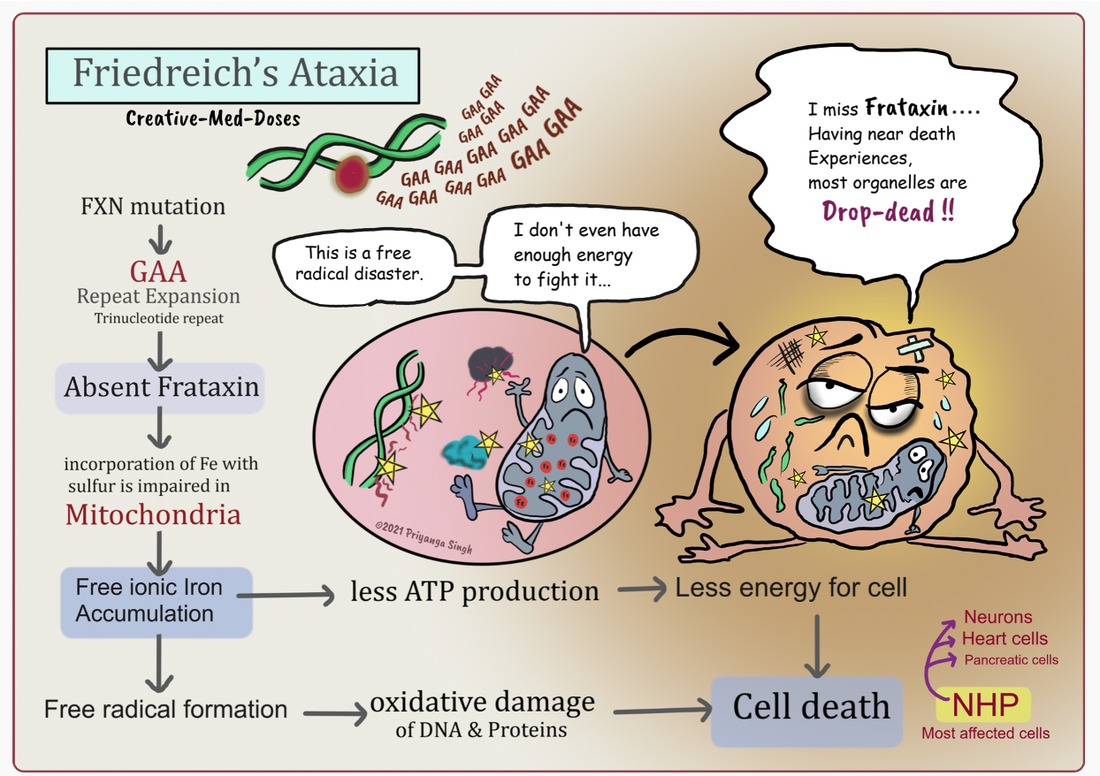Friedreich's Ataxia (FRDA)
Friedreich's Ataxia (FRDA) is a rare neuromuscular degenerative disorder effecting 1 in 50,000 people. It is a disease caused by the expansion of a trimeric repeat (GAA) in the first intron of the FXN gene that impedes its production at normal levels. FXN codes for Frataxin, a nuclear encoded mitochondrial targeted protein that works within the inner mitochondrial matrix where it acts as a scaffold protein to aid in the creation of iron-sulfur clusters (ISCs). ISCs are used in the electron transport system (ETS) to transiently contain the electrons as they flow through the systems namely in complex I, II, and III. Insufficient ISCs production leads to reduced ATP creation and a build of liable iron within the mitochondria. Reactive oxygen species (ROS) are created by this liable iron; ROS and a compromised ETS result in oxidative damage and cell death. There are other pathways involved in disease pathology, but these are hallmarks. The main cell types effected are Neuornal, Heart, and Pancreatic- those cells requiring some of the most energy and expressing FXN mRNA at the highest amount.
image from: https://creativemeddoses.com/topics-list/friedreichs-ataxia-with-absent-frataxin/

